Two weary but excited executives are on an airplane from Boston , returning home after three days immersed in a program on Process Management.
- Exec One: That was just a great course … I now can clearly see the power of Process Management … if we could start thinking about improving our core end-to-end processes rather than protecting our silos, we’d be much better off … both in company performance and end-of-year incentive comp!
- Exec Two: You are right on. We are not close to realizing the true potential of our company with our current way of operating.
- Exec One: Yeah. And I have a sneaking suspicion I know exactly where we are in process management maturity. When something goes wrong our first question is NOT ‘what are the process steps we need to fix?’ but ‘who is the dumb SOB that screwed this up?’
- Exec Two: Right again, but you and I have got to be the cavalry that gets Process Management in play … and we’ve got to start Monday morning … and we’re gonna need some industrial-strength Change Management!
Both process management and change management are hot topics today … but there seems to be a good deal of confusion about their definitions and relationship. This white paper is designed to be a heart-to-heart explanation of the two fields and how they need to be used together in order for organizations to deliver improved business results. The specific aim of this paper is to embellish in some detail the particular kind of Change Management that might be used to “implant” Process Management into an existing organization.
Let’s start with some really high-level definitions:
Process Management (PM) – the management discipline … made up of concepts, principles and practices … that enable an organization to consciously change the effectiveness and efficiency of its work processes in order to improve multiple dimensions of organizational performance
Change Management (CM) – the management discipline … made up of concepts, principles and practices … that enable an organization to consciously change from one way of operating to another (i.e., operating without using Process Management to the state of using Process Management at some level of maturity)
Note: please don’t stop here and “nit pick” these definitions … I know you can argue endlessly about every word. Just give us a break and keep reading!!
(continuing) Wow! Those definitions still sound pretty vague, doesn’t they? Its hard to see the differences … and its really tough to understand how the two might need to work together. Agreed … so lets use an analogy to clarify things. Try this story:
A friend of yours has just been told by his physician that he needs an artificial heart in order to have any chance of survival. After the initial shock wears off, your friend begins to try to understand the situation. Fortunately the first site he Googles lays things out pretty clearly.
“Use of an artificial heart is now possible because of years of pioneering work in two separate but related fields … work that has led to:
o The perfection (design, engineering, manufacture, testing, refining) of an effective and efficient artificial heart and
o The perfection of surgical procedures for implanting the heart, procedures that maximize the patient’s chances of recovery.”
Obviously perfection in both is necessary for success (a great heart and ineffective surgery doesn’t work … and neither would effective surgery to implant a defective heart). Now, here is the analogy (or simile or metaphor):
 Process Management is like the artificial heart. PM has been pioneered, tested, and refined and has been proven to improve organizational performance … if it can be implemented (implanted) and used on a day-by-day basis by an organization.
Process Management is like the artificial heart. PM has been pioneered, tested, and refined and has been proven to improve organizational performance … if it can be implemented (implanted) and used on a day-by-day basis by an organization.
 Change Management (in this case) is like the surgery that implants/implements Process Management into the organization. Change Management is a distinct discipline with principles, methods, and techniques that have been proven to work in making the kinds of comprehensive changes that are needed to put a new management discipline (like Process Management) into play. (From this point on, we will be focusing on a particular kind of Change Management, the kind that would be used to implant PM)
Change Management (in this case) is like the surgery that implants/implements Process Management into the organization. Change Management is a distinct discipline with principles, methods, and techniques that have been proven to work in making the kinds of comprehensive changes that are needed to put a new management discipline (like Process Management) into play. (From this point on, we will be focusing on a particular kind of Change Management, the kind that would be used to implant PM)
The Heart of the Problem
Restating the obvious, the heart of the problem is to get Process Management into play as a core value, principle, and discipline for running an existing organization. The reason we want PM in play is because its use can enable the organization to get better results. The tough part turns out to be the implanting of the PM discipline without suffering some typical reactions to such a change:
- Half-hearted attention and commitment … and half-hearted action
- Loss of interest before the implanting is complete
- Being over-run with the day-to-day crises of running a business
- Confusion about just what managers and employees are to do differently and when they are to do it
- Management shutdown, overload, rebellion, or sabotage
- And so on …
Change Management As Surgery …
So how do we get the implanting … the surgery … the Change Management …done, in order to get PM into effect producing better results for the organization? After thirty years of work on implanting, we have found three critical success factors:
- Heroic Leadership that guides, enables and demands PM
- A Management System that enables both running the business and changing the way the business operates
- A Change Model that provides logical, disciplined steps (i.e., a roadmap) for implanting PM

Heroic Leadership
Just as a heart patient makes a heroic decision to permit the implanting of an artificial heart, we need executive leadership at the very top making the heroic decision that his/her organization will implant and live with Process Management. The heart patient knows its going to be rough, a long haul and that there will be unexpected complications. She also knows that she can’t give up! Once the scalpel is out, there is no turning back.
Likewise, the senior executive must make the decision to lead a fully-committed PM implantation effort … to provide the personal “in front of the troops” presence and direction, to provide the needed resources and organizational time … while continuing to run the business on a daily basis in order to meet or exceed the year’s business goals.
Heroic leadership is required as the entering argument for any organization-wide effort to get PM up and running. Does that mean that organization members can’t “tinker” with PM in their own organizations? No. In fact the right kind of “tinkering” might just be the thing that gets that key senior executive on board (Note: the Change Model we will describe shortly has a tinkering step built in.)
A Dual-track Management System
A crucial surgical step during the implantation of an artificial heart is to arrange to keep the patient alive while the surgery is going on. Not exactly a minor detail! Keeping the patient alive turns out to be a pretty complicated process requiring very special “machinery” that has been developed and tested over many years. In fact there may be more patents on the “stay-alive-during-surgery machinery” than on the artificial heart itself!
Keeping our analogy in mind, two kinds of “machinery” are needed for heart surgery: the artificial heart and the stay-alive machinery. When we implant PM, we use two kinds of machinery as well … the Process Management body of knowledge (the artificial heart) and a Dual-Track Management System (the stay-alive machinery). In the context of implanting PM, the Dual-Track Management System we refer to is (1) a means of running the business (staying-alive) while (2) changing the business (connecting the artificial heart).
No change initiative (like implanting PM) occurs in a vacuum. By definition, the change initiative must go on while the organization is “staying alive,” doing its “day job” of producing products, serving customers, collecting monies, and so on … in order to make a profit for share/stakeholders.
The dual-track management system can be represented by the figure below, a reminder that businesses (and executives) must do two things at once … and they must do them both well if success in implanting PM is to be successful.
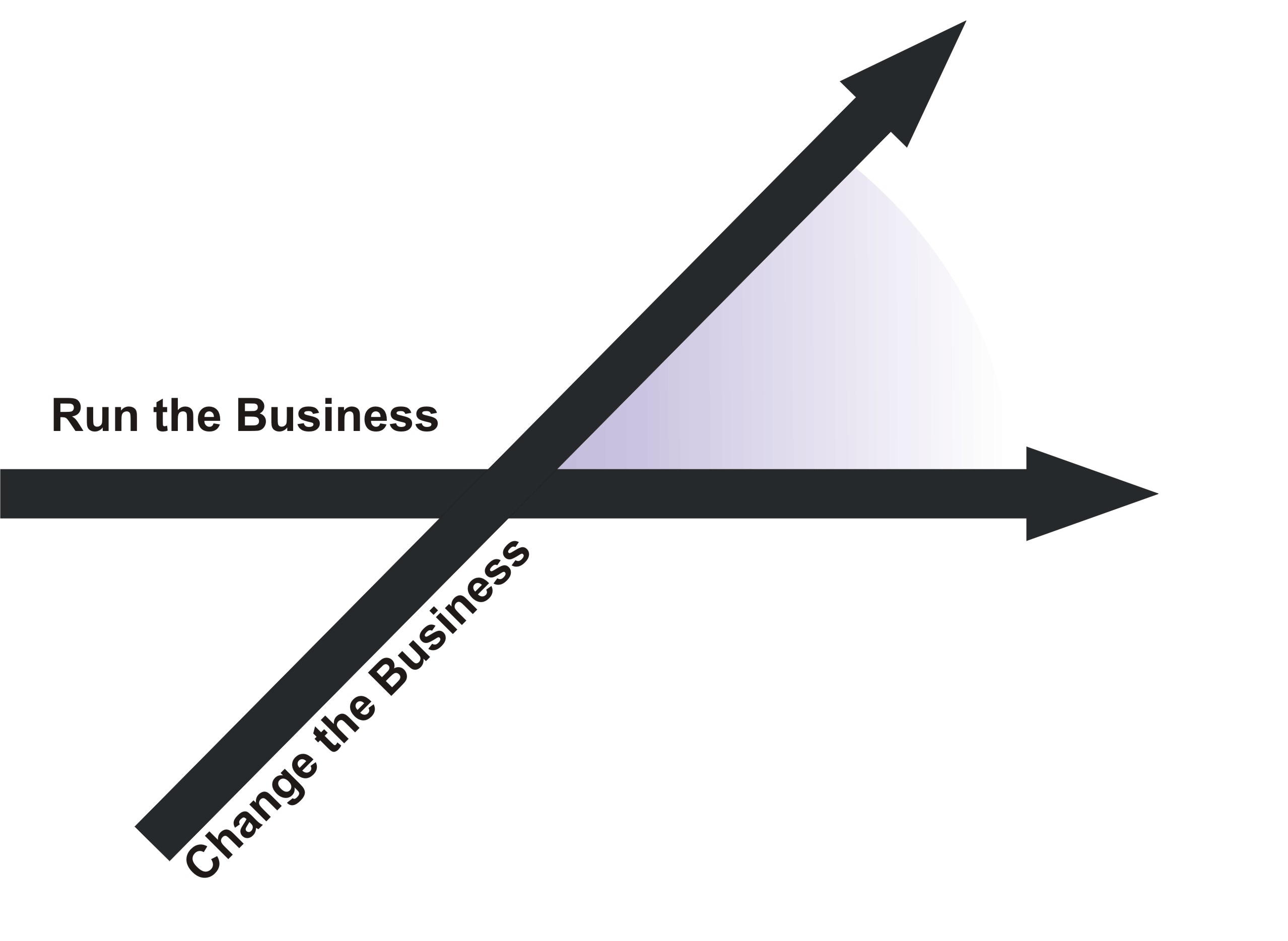
While there are a number of moving parts to a full-blown Dual Track Management System, a simple form can be easily visualized. Imagine a senior executive team that meets every Monday. Imagine that the morning session focuses only on Run-the-Business issues (e.g., progress toward financial targets, status on actions to fix customer upsets, manufacturing breakdowns, etc.). Further imagine that same executive team meeting each Monday afternoon to focus exclusively on the progress the organization is making to transplant Process Management (e.g., who are the next managers to get PM training in Boston, what is the progress on the pilot PM project in Department X, where is the task force that is mapping core processes, how is HR coming in designing an incentive comp system that will reward individual management progress in using PM, etc.).
The regular practice of the two executive meetings each Monday becomes a rudimentary “management system” that provides focus and balance to both running and changing the business. This simple but powerful idea can be extremely valuable to organizations trying to transplant PM because it moves their thinking from an unconscious “implant PM OR run the business” to a conscious “implant PM AND run the business.”
Remember our first critical success factor of heroic leadership? It will take heroic leadership to keep this kind of dual-track management system in place … to keep from “canceling the afternoon meeting because we had a good change-the-business session two weeks ago” … or “we really need the time this Monday afternoon to get to the details of the current customer problem in the southern region,” and so on.
A Change Model
We have the patient on the table, we have the artificial heart standing by, we have rigged up the machinery needed to keep the patient alive during the operation, and now its time for the surgeon to complete the transplant. And nothing replaces the firm hand of a skilled surgeon guided by “a clinical pathway” of proven steps for implantation. We have a company that wants to implant PM: the body of PM knowledge is in hand, a run-change management system is in place … what’s needed now is a pathway for getting PM in play. While pathways (i.e., change management models) abound, we prefer a simple one as in the figure below.
This simple three phase model can be used as a pathway (or roadmap) for the implantation of PM (but keep in mind, the roadmap only covers “changing to PM,” not “running the day-to-day operations to meet business targets). The three phases sound simple enough:
- PHASE I: Build Awareness and Educate on Process Management and the Process Enterprise and the needed level of process maturity
- PHASE II: Conduct initial trials of Process Management/Enterprise concepts and techniques in selected work processes
- PHASE III: Integrate Process thinking into the day-to-day operations of the company
The table below shows the “next level of detail” in a transplantation roadmap. Note that there are a surprising number of detailed steps to be completed by the organization’s senior executives. They in essence become the surgeons who must get the transplant done while running the day-to-day business to targets.
Roadmap for Transition to Process Management
PHASE I:
Awareness and Education on the Process Enterprise 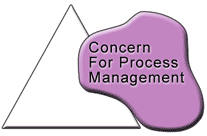
- Understand the Process Management movement as it applies to company
- Develop awareness of company needs for the next level of Process thinking and action
- Develop rationale for moving Process Management to the next level
- Leaders select and agree to roadmap for Transitioning to the Process Enterprise
- Develop Process Management champions
- Conduct informal Process Management assessment using a capability maturity approach
- Conduct next level Process Management awareness/education
- Develop business case for Phase II: Trial
PHASE II:
Initial Trial of Process Enterprise concepts and techniques 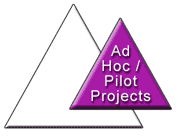
- Formally assess Process Management needs and current capability/maturity level
- Pinpoint, and assess strategic work processes and target the needed capability maturity level Click here for an example of a Capability Maturity Model of a Core Process
- Develop pilot projects around core work process to both "learn and do"
- Conduct just-in-time process enterprise training of pilot teams
- Make sure pilot results are put into action
- Launch other Process Management projects in other parts of organization…based on need
- Develop business case for Phase III: Implementation of targeted level
PHASE III:
Integration of Process thinking and Transition to the Process Enterprise 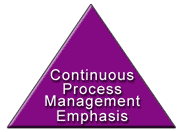
- Develop Implementation plans/timeline/measures/goals…including the target Process Management capability maturity level
- Incorporate Process Management measures/objectives into performance management system (goals and rewards)
- Formalize and integrate Process Management tools
- Identify and maintain an organizational environment supportive of targeted level of Process Management
- Modify work processes for Process Management effectiveness
- Take direct actions as needed to raise the Process Management capability maturity level to target
- Measure Process Management results
 = Process Management Emphasis
= Process Management Emphasis
Summary
The purpose of this brief white paper has been to clarify (we hope) Process Management and Change Management … and to show the critical role that CM plays in the implantation of PM.
Lets take the heart analogy one final step and look at how PM and CM must work together to result in a healthy patient. Almost like football, four things can happen during implantation andthree of them are bad.
- Flawed PM content and invalid CM = organizational damage, wrong ideas about PM that are fortunately not implemented
- Flawed PM content and valid CM = organizational disaster, spreading ideas and practices that hurt, not help the organization to get better results
- Valid PM content and invalid CM = organizational boondoggle, a waste of time and money and a turn-off to the organization about PM value
- Valid PM content and valid CM = organizational results … that come from more effective and efficient business processes
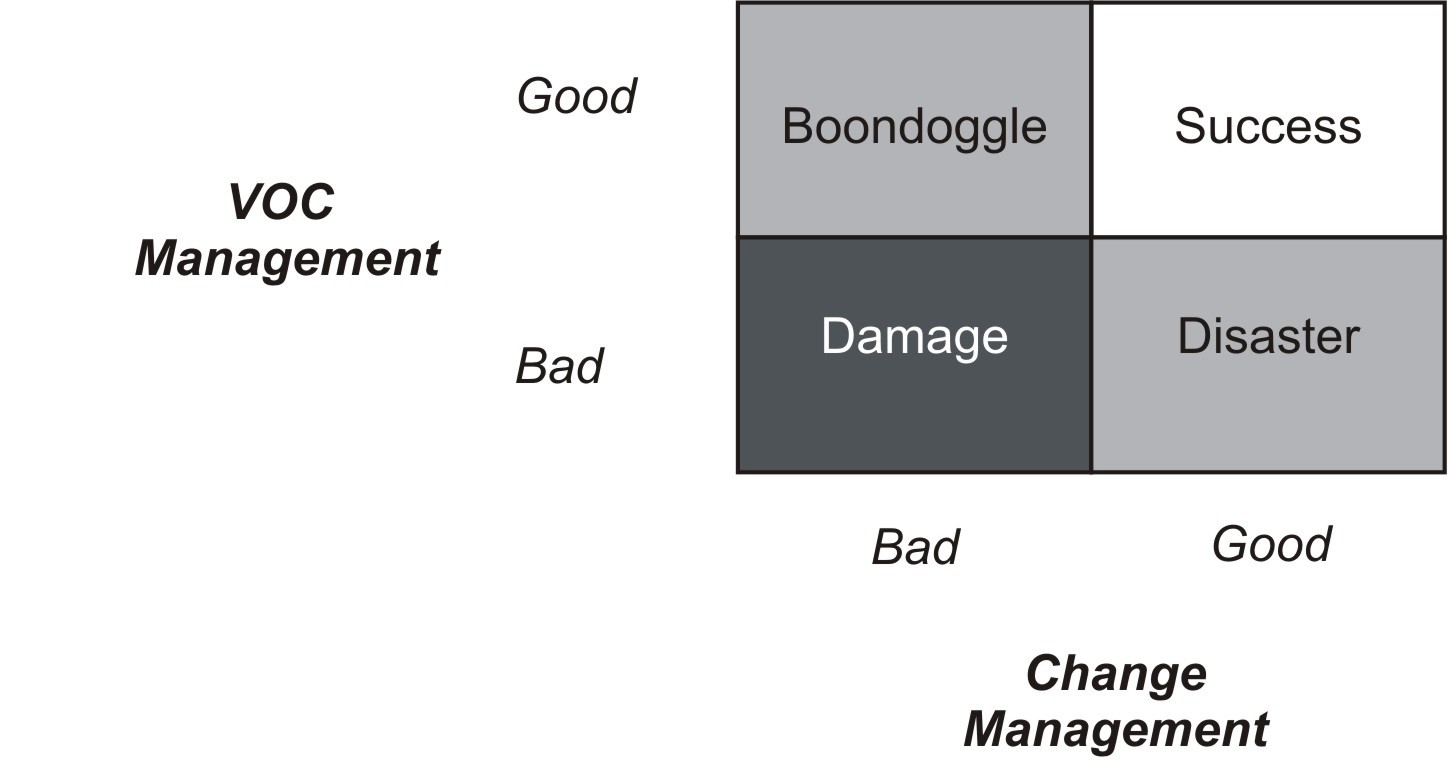
The bottom line is that Process Management can enable powerful improvements in business results. Getting PM into play is the hard part. Transplantation of PM is a tedious and demanding undertaking that organizations can get done … if they have strong and heroic leadership, if they have a run-the-business/change-the-business perspective, and if they have a clear roadmap.
Like an artificial heart and the surgical equipment/procedures to implant it, PM and CM must be “joined at the hip” to enable success from Process Management.
No comments:
Post a Comment